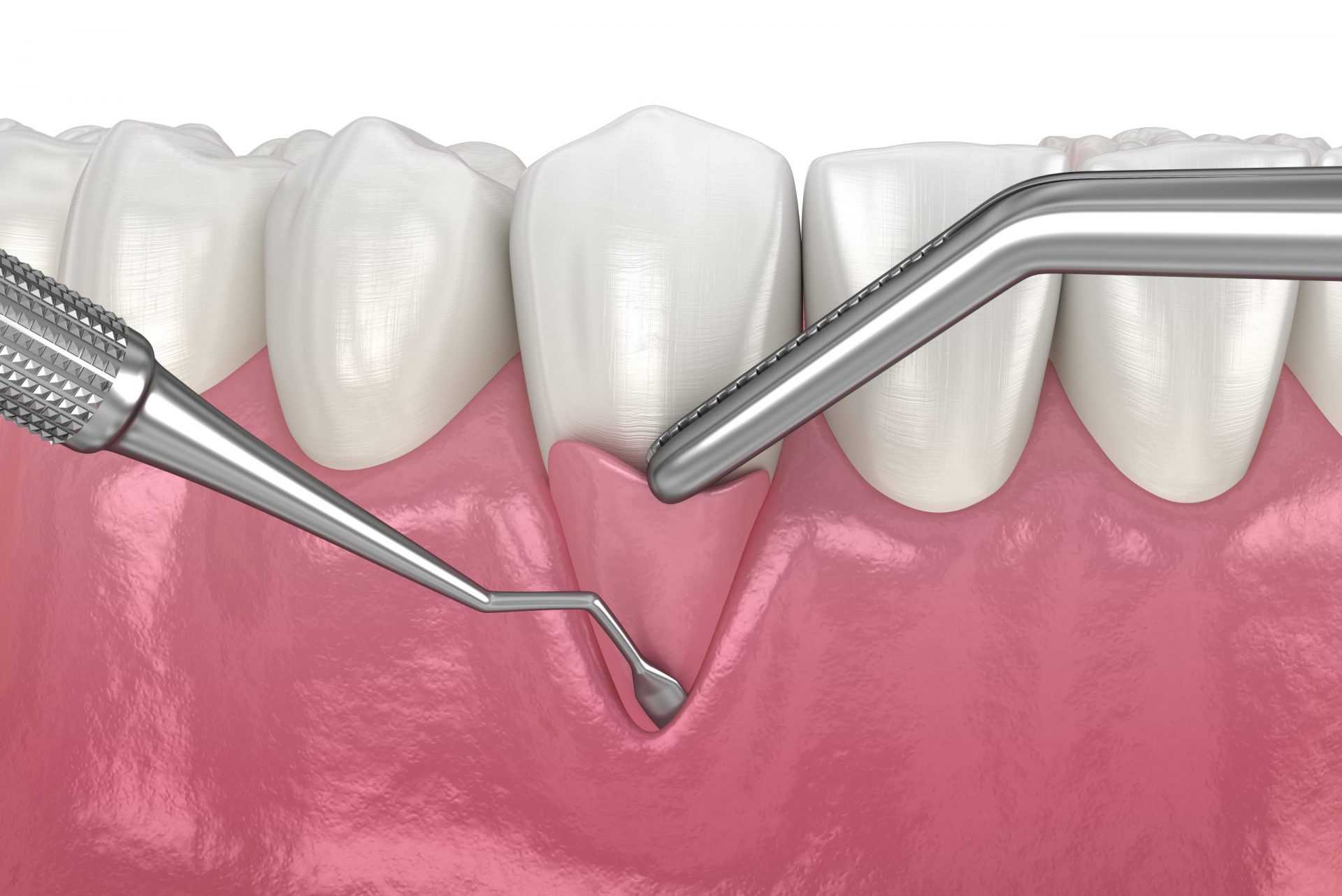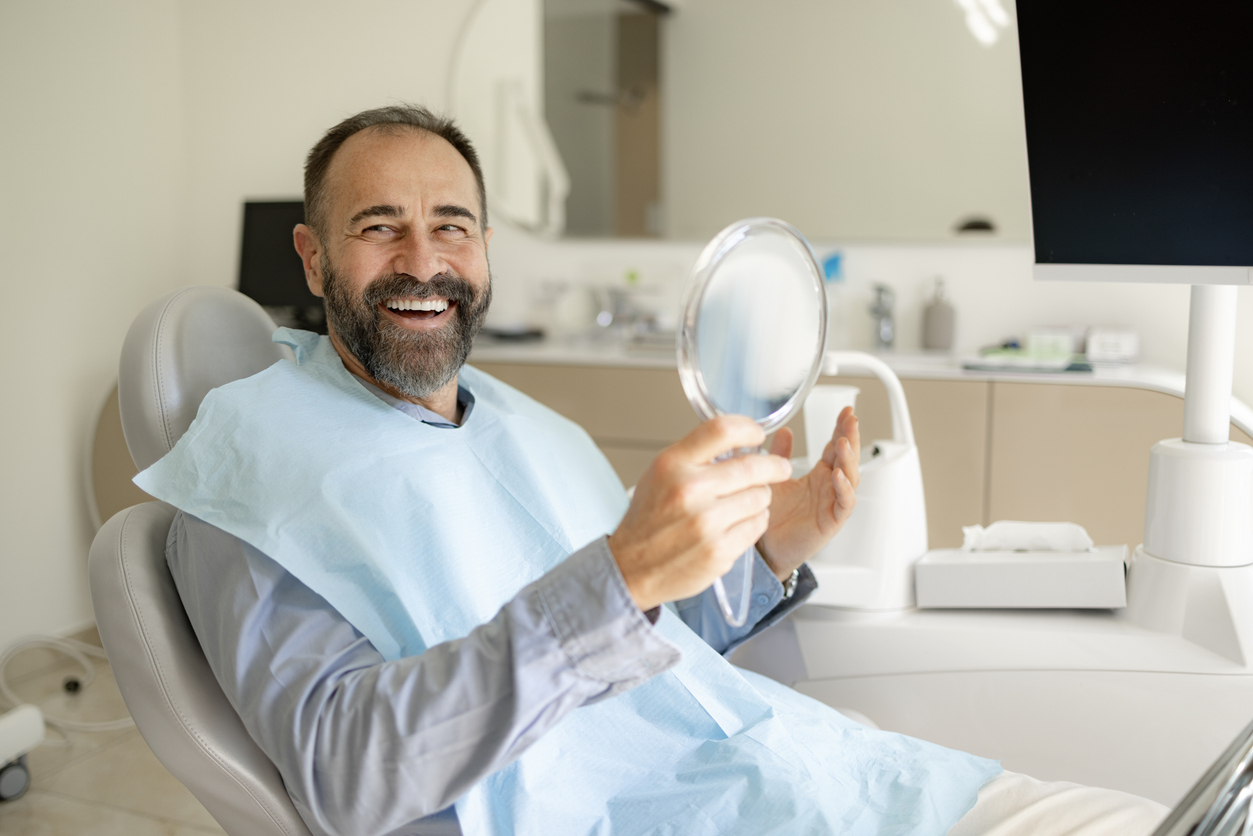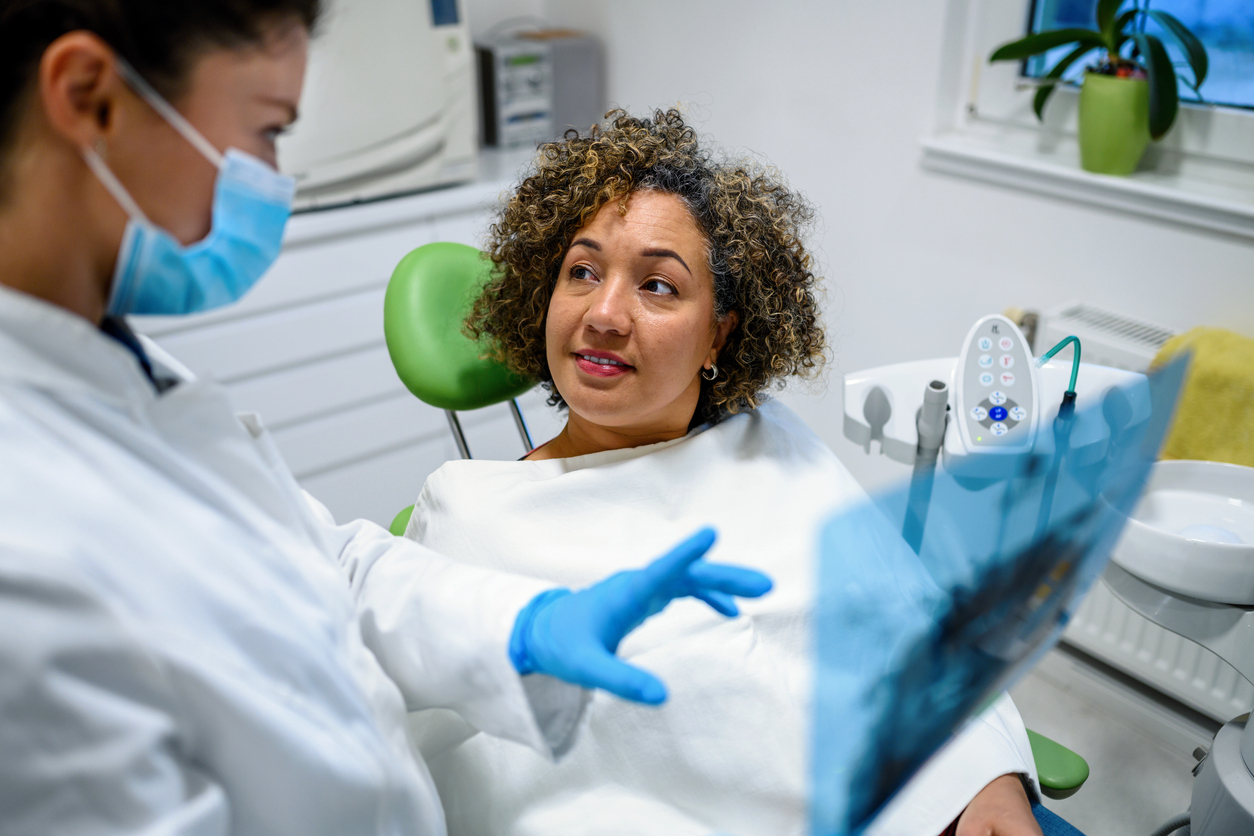Many people neglect their oral health. But oral health will affect all the other parts of your body. Poor dental hygiene can contribute to diseases like heart disease and diabetes if not treated properly. Going to regular dental checkups and working with your dental team to make a health plan will benefit your entire body.
If your dentist or periodontist told you that you need a gum graft, you may have a lot of questions. It sounds like an intense procedure just by the name and maybe make you feel nervous. Learning about gum grafting, the procedures, and recovery time is an important step to alleviating these worries.
What Is Gum Grafting?
Gum grafting helps to protect your teeth if the gum line has receded. It can also improve your smile. A small amount of new gum tissue is moved to an area where gum tissue is needed. It covers the root surfaces of your teeth to protect them from infection, sensitivity, and damage.
Gum Recession from Wear or Gum Disease
Gum grafting can improve the look of your mouth, but most often it is for resolving the issues of gum recession. Receding gums happen when the gums around your teeth wear away and leave the root of the tooth exposed. This can happen from brushing too hard or from gum disease.
Gums act as a natural barrier for the more sensitive parts of your tooth against the outside elements. Having root exposure can cause damage to the bone and later lead to the loss of the tooth.
Gum recession is a fairly common issue that a large number of adults deal with. Because it can start so gradually, it may go unnoticed for a long time. You may only notice it when it gets severe. Going to the dentist regularly will help you find the problem sooner. You can take preventative steps to avoid the problem.
In addition to not looking very nice, gum recession also leads to other problems. The root of the tooth can become discolored and look bad. It can also cause tooth sensitivity, and you may notice a difference when you eat or drink foods that are hot or cold. If left unattended for too long, the entire tooth could become compromised and need to be removed.
Gum Grafting Procedure
There are basically three different types of gum grafts that periodontists use. The kind used will depend on a lot of factors, and you will want to discuss with Dr. Trujillo which option is best for you.

Do You Have Questions?
Talk to Dr. Trujillo, one of Phoenix’s best periodontists. He can answer all of your questions about gum grafts and the causes of gum recession. Schedule a consultation today.
#1 Connective Tissues Grafts
Connective-tissue grafts are the most common procedure. The periodontist makes an incision on the roof of your mouth and creates a flap of skin that can be pulled back. The periodontist removes the tissue underneath the flap and stitched it to the tissue around the exposed root. After securing the graft tissue, the flap of skin on the roof of your mouth is also stitched back down.
#2 Free Gingival Grafts
Free gingival grafts are similar to connective-tissue grafts. They also use tissue from the roof of your mouth, but instead of taking the tissue from underneath a flap of skin, the periodontist takes tissue directly from the roof of the mouth. This is more common if the patient has thin gums and requires more tissue to resolve the problem.
#3 Pedicle Grafts
Pedicle grafts are another option your periodontist may consider. Instead of taking the tissue from the roof of the mouth, the tissue comes from the gums surrounding the exposed root. The periodontist makes an incision on the gum and then stretches it to cover the root and sows it into place. This is only possible in patients that have a lot of gum tissue directly where needed.
In rarer cases, tissue may come from a tissue bank instead of the roof of your mouth. Tissue-stimulating proteins help your body naturally produce more tissue. Your periodontist will address any issues or concerns you have with the method he recommends before proceeding.
Recovery After Gum Grafting
Gum grafting is an outpatient procedure, and you will be able to go home directly afterward. A sedative can help before the procedure to ease anxiety. If this is the case, then you should not drive yourself home. You should make other arrangements for your transportation until the sedative wears off.
Following Instructions for Recovery
You should always pay careful attention to the instructions your dentist gives you for your recovery. They will give you instructions regarding your diet, physical activity, and medications. You should not floss or brush the gums that have received repair until completely healed. Your periodontist may also give you a special mouth rinse that will control the plaque levels while it heals. An antibiotic ointment may also be prescribed to help prevent infection at the site of the repair.
Eat Soft Foods
Your dental team will probably advise you to eat soft, cool foods after the procedure like eggs, pasta, gelatin, yogurt, and ice cream. It will probably take a week or two for your mouth to completely heal, but that should not impede your ability to perform your normal daily activities. You should expect to experience a little bit of pain at the sites of repair and tissue extraction. Talk to your dentist about managing your pain levels with over-the-counter or prescribed medication.
Should Issues Arise
You should reach out to your periodontist if you have questions during recovery or start to notice problems forming. If you have bleeding in your mouth that won’t stop after applying pressure for 20 minutes, you need to contact the periodontist and/or your doctor right away. You should also manage the pain, swelling, and bruising with medication. Contact Dr. Trujillo if the pain or bruising exceeds the expected levels.
Contact Arizona Periodontal Group
Our trained team of periodontal professionals can help you through this process. If you have noticed the warning signs of gum recession and tooth sensitivity, you should make an appointment today. The gum recession will get worse over time unless taken care of. Don’t put it off or ignore it. Contact Arizona Periodontal Group today for gum grafting.





